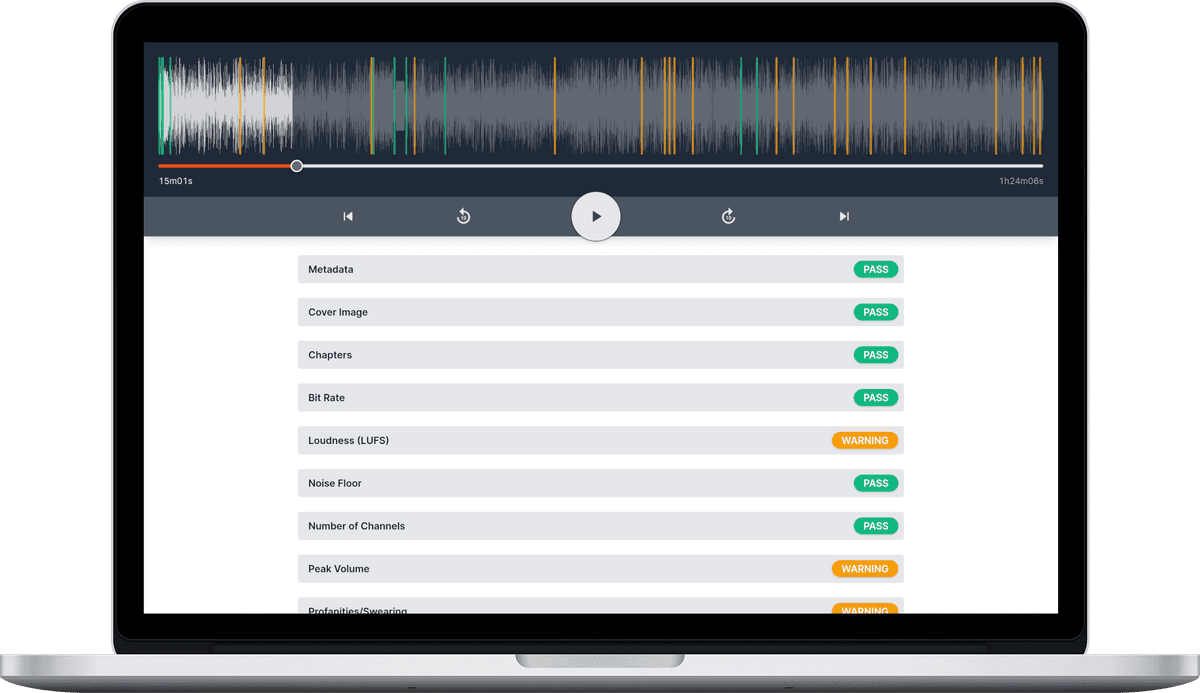How to Create a Professional Podcast Intro and Outro
![]() Damian Moore, Last updated: 14 November 2024
Damian Moore, Last updated: 14 November 2024
A professional intro and outro are important elements of any podcast, as they help to set the tone for your show and give it a sense of polish and professionalism.
Here are a few points to consider when coming up with a professional intro and outro for your podcast:
- Determine the main purpose: Figure out why you need an intro and outro before you start creating it. Do you want to introduce your show and its hosts? Do you want to give a brief overview of what your show is about? Or do you want to use your intro and outro as a way to promote your show or your sponsors? By identifying the purpose of your intro and outro, you can tailor your content to meet these goals.
- Consider the tone and style: In an intro you’ll be setting the stage for the whole show and that energy can propel the rest of the episode. Maybe you want to spark a question or curiosity, entertain with humour, make a human connection, or just set a mood — just remember it’s going to be listened to a lot and you and the listener have to live with it.
- Keep it brief: Your intro and outro should be short and to the point. A good benchmark for length is to aim for around 15-30 seconds for your intro and 10-15 seconds for your outro. By keeping these elements short and sweet, you can avoid boring your listeners or taking up too much of their time. If it contains speech, take care in your writing to make it succinct.
- Use professional-quality audio: The audio quality of your intro and outro is just as important as the content itself. Be sure to use high-quality audio sources and software to record and edit it. You’ll probably be using this in trailers, videos and other marketing so bear that in mind.
- Consider hiring a professional: If you’re not confident in your own audio engineering skills, need ideas or simply don’t have the time, consider hiring a professional. There are many freelancers on platforms like Upwork and Fiverr who can help you create a professional-quality intro and outro. You can usually listen to several samples from their portfolio to find the right general style.
- Combine music with sounds: An intro doesn’t just have to be music and a voiceover. Think about adding sounds that create more ambience. For example, if your podcast is about electric vehicles then you might want sound effects of electric motors in performance cars as they whizz past.

There are a few different options for finding music that you can use on your podcast:
- Royalty-free music libraries. There are many websites that offer royalty-free music that you can use on your podcast. These libraries typically charge a one-time fee for the use of the music, and you can then use the music on your show without worrying about copyright issues. Some popular sites/platforms are Uppbeat, AudioJungle, and PremiumBeat. Some sites even have free tracks you can use but you need to include their credit notice on your site and in your show notes. One thing to be aware of is that if the music is free then it is more likely to be used elsewhere by your audience in other people’s content (YouTube videos etc.).
- Creative Commons music: Creative Commons is a licensing system that allows creators to share their work for free, with certain conditions. Many musicians and composers release their work under Creative Commons licenses, which means that you can use the music on your podcast as long as you follow the terms of the license. Some popular sources for Creative Commons music include Free Music Archive, and ccMixter.
- Hiring a composer: If you’re looking for something specific or unique, you might consider hiring a composer to create original music for your podcast. This can be a more expensive option, but it can also give you a high level of control over the music and ensure that it fits your show perfectly. Upwork and Fiverr can be used for this.
- Using public domain music: Public domain music is music that is no longer protected by copyright and can be used freely by anyone. There are many websites that offer collections of public domain music, such as Musopen and The Internet Archive. Keep in mind that while public domain music is free to use, it may not be as high-quality or as diverse as music from other sources (e.g. it tends to be older recordings with more than sixty years since the composer/artist’s death).
It’s important to be mindful of copyright when using music on your podcast. Be sure to check the terms of use for any music you use to ensure that you’re not infringing on anyone’s copyright. Failing to do this could lead to legal challenges, fines or having to change your audio — even across your back catalogue of shows. YouTube has their Content ID automated tool which is used to find copyright-protected content on their platform, while other platforms employ similar solutions.
I hope this has given you some guidance if you are embarking on this process. In summary, creating a professional podcast intro and outro is important for establishing your brand and setting the tone for your show. To create a professional intro and outro, define your brand and style, use a consistent format, keep it brief, and use high-quality audio. There are several options for finding music to use in your intro and outro, including royalty-free music libraries, Creative Commons music, hiring a composer, and using public domain music. It’s important to be mindful of copyright when using music on your podcast and to check the terms of use to ensure that you’re not infringing on anyone’s rights.
Photo credit: Vladislav Klapin, Martin Rajdl

